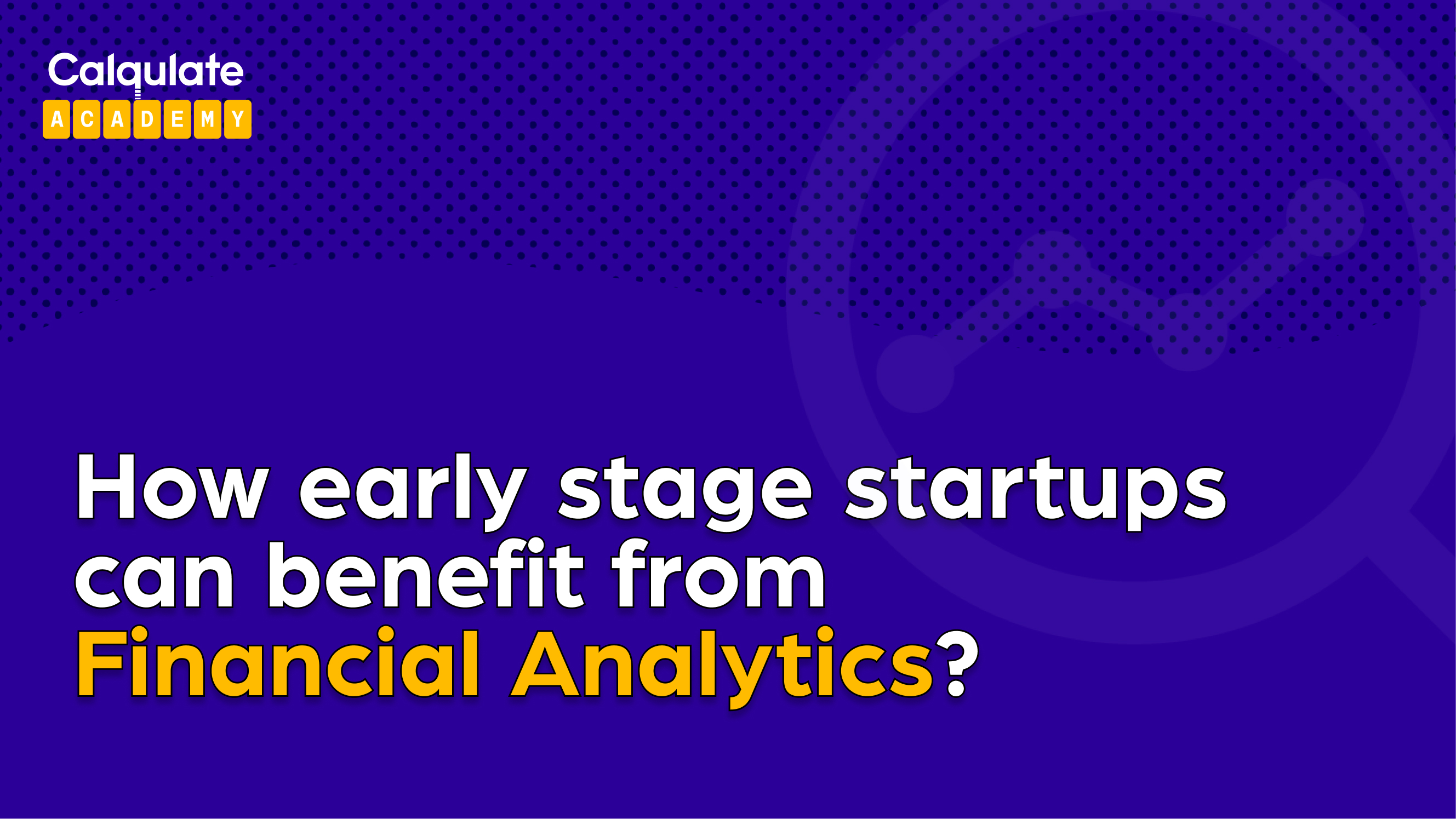It's never too early to start thinking about your financial analytics. Even if you are pre-money, the processes and metrics you set up now will benefit you further down the line. If you set up your finance stack proper from the outset, you will save hundreds of hours of work and litres of tears from frustration. In this article, we explain the importance of thinking about your finance stack from day one.
Each co-founder wants to grow their business, and capital is the foundation of every organization’s growth. A safe way to reach your goals without depleting your savings is working and spending efficiently.
Running an early-stage company, you are most likely aiming to increase your sales in the early days. This is normal – you need to find traction to fund further growth, either through sales or investment. Without income no business can survive.
However, the contradiction is that you need to spend in order to earn. For every dollar you spend, you should get an increase in your return. Having a solid finance stack from the get go, allows you to figure out early on what is working and what is not.
Financial reporting can take up a lot of time – which is why automating these processes can free up more of your teams resources to focus on revenue generation, sales, product development and finding that elusive product market fit.
Let's take a look at some of the other reasons Seed stage companies should consider their financial analytics early on.
When is the right time to scale?
Scaling is a question of getting your timing correct. If you start spending money too early, your cash runway will disappear faster than you can say "I spent 10,000 on LinkedIn ads".
On the other hand, scaling too late means you have potentially missed out on a couple of months revenue growth and risk falling behind your competitors.
Being aware of your LTV (Customer Lifetime Value) and your CAC (Customer Acquisition Costs) from day one helps you develop a trend line to track your progress towards break even and eventually profitability. Going a little deeper, you can set targets for:
- MRR Growth %
- LTV to CAC ratio
- CAC pack-back time
Yearly cashflow calculation and prognosis
Every entrepreneur will tell you that their biggest concern is money. It's what keeps most of us awake at night. In your companies early days, cashflow will make or break you.
Nobody wants to spend their 2nd and 3rd year of business in Nuclear Winter / Cockroach mode, which is very often the consequence of bad financial planning in your first year. For those of you lucky enough to NOT know what those terms are, it basically means you cut all expenditure (aka fire all staff, cancel all tools and subscriptions), while working a second job to support server costs, while you spend your nights trying to build a sales pipeline. It ain't pretty and it rarely ends well. More often than not, it ends with burn out.
From your first day you are aiming to have a positive cashflow. However, creating a stable base of recurring revenue to secure your financial needs requires forecasting. Good forecasting is not built in a day – it takes time to gather the data required to make sound assumptions for your model.
A key concept is investing revenue back into your business in order to secure more clients. This in turn will increase your costs, but if your LTV to CAC ratio is approaching 3:1, after three to six months, you should be on the path to having a sustainable revenue stream.
An easy way to improve your cashflow and increase the accuracy of your forecasting is to invoice your clients annually instead of every monthly. Especially if you are in a B2B vertical. For B2C, annual payments need to be incentivised heavily.
Annual payment will reduce your CAC payback time, which should ideally be less than 12 months.
With a positive cashflow from the beginning of the customer relationship, you can shift the focus of your business operations to quickly acquiring new customers and increasing the pace of your product development.
Calculate your business’s monetary development
Before anyone will invest into your business, they will check your financial KPIs. One of the most important indicators is your EBITDA (Earnings Before Interest, Taxes, Depreciation, and Amortization).
Many lenders and investors consider this as a vital KPI. The second most important indicator is your revenue growth rate. Investors use these KPI's to evaluate how much money your business is worth and therefore how much they should invest. In most cases a great EBITDA rate signals a larger growth potential and you will fetch a higher valuation and funding round.
For early-stage companies the above does not apply. You are expected to spend money in Marketing and Sales, which is important to grow your business. Thereby, you create costs which decreases your EBITDA rate so that it may even be negative.
For early-stage companies, investors will take into consideration other indicators to measure your organizations performance. A negative EBITDA rate is acceptable when you are able to show your other metrics performing well. For example, a high rate of revenue growth.
Key takeaway
My tip as the Head of Growth for an early-stage company is to develop your financial KPIs early, trust your analytics, and base your business-related decisions on the data you gather from day one.
Talk with your CFO and CEO often about your metrics and use them to support your decision-making process with evidence.
